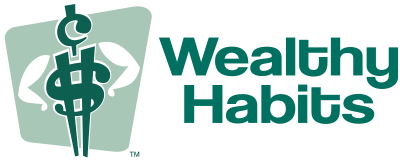When kids invest early, they avoid financial fear. By starting early, they learn that managing their finances doesn’t have to be scary. Instead, they see each portion of the financial world as a tool for them to build a better future. The best way to get them started is to open an investment account with your child and allow them to have a voice in the choices being made.
Getting Started: Types of Accounts
Once your child has spent some time learning about investing, it’s time to help them open their first account. When dealing with accounts for minors, there are two options –
- UGMA (Uniform Gift to Minors Act)
- UTMA (Uniform Transfers to Minors Act)
From an investment perspective, these accounts behave similarly. The primary difference between the two is the age at which ownership is transferred to the child. In an UTMA account, the account will be transferred at the age of 21, while in an UGMA, the child can take ownership of the account at the age of 18. These accounts can be opened at virtually all brokerage houses. The primary focus should be the platform’s ease of use and the commissions the brokerage takes on each trade.
Once you’ve established an account for your child, it’s time to deposit funds. The primary way to do this is by writing a check to the brokerage firm. Since a minor is not allowed to deposit funds into the account, the money needs to be transferred from your account.
What’s Next: Types of Investments
After funding the account, it is time to begin looking at different options in which your kid can invest. The primary three investment types are as follows –
- ETFs
- ETFs, or Exchange Traded Funds, are funds that allow your child to invest in the general market passively. These funds tend to be cheap as there is little happening to them, but can allow for great exposure to the markets.
- Mutual Funds
- Mutual Funds behave much like ETFs in the way that they allow your child to invest passively. The primary difference is that many mutual funds actively manage your money on your behalf, in the hopes of getting higher returns than the general market. Due to this active management style, mutual funds tend to come with a slightly higher management fee. Before investing in a mutual fund, identify if the fund has front-loaded or back-loaded fees. These fees are the cost to invest in the mutual fund BEYOND the annual maintenance fee. For simplicities sake, it may be best to find a no-load fund for your child’s first entrance into the market.
- Individual Stocks
- Individual Stocks are the highest risk option on this list. Buying into just a single company, or a mix of a few companies eliminates the diversification you are getting from investing in both ETFs and Mutual Funds. By investing this way, you are hoping that those few companies continue to do well. Investing in individual stocks is also the fastest way to get your child interested in both the markets and what makes for a good investment. By being tied to a select few companies, they become interested in checking their account regularly and follow the news cycles/financial reporting of the companies each quarter.
How Can You Help?
Remember, when kids invest, they learn to avoid big mistakes later. Getting your child their first investment account and allowing them to have a voice in the decisions made is only the first step in setting your student up for a brighter financial future. Regardless of what career path they take, they need to know that money is not a scary or taboo subject. Speak with them openly about money and highlight both the good and bad habits that you see throughout the world. Continued education is necessary for them to develop wealthy habits that will provide for them in the future.
Have questions or don’t know where to start your child’s financial education? Please take a look at the resources on our site, or sign your child up for one of our 5-day summer camps where our instructors help develop the habits that will lay the groundwork for the remainder of your child’s financial future.

